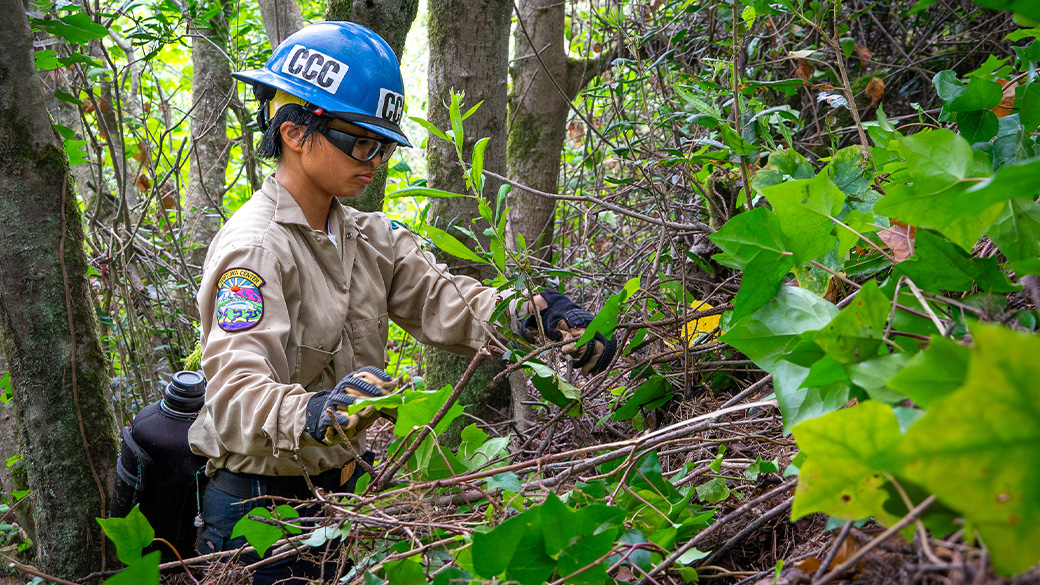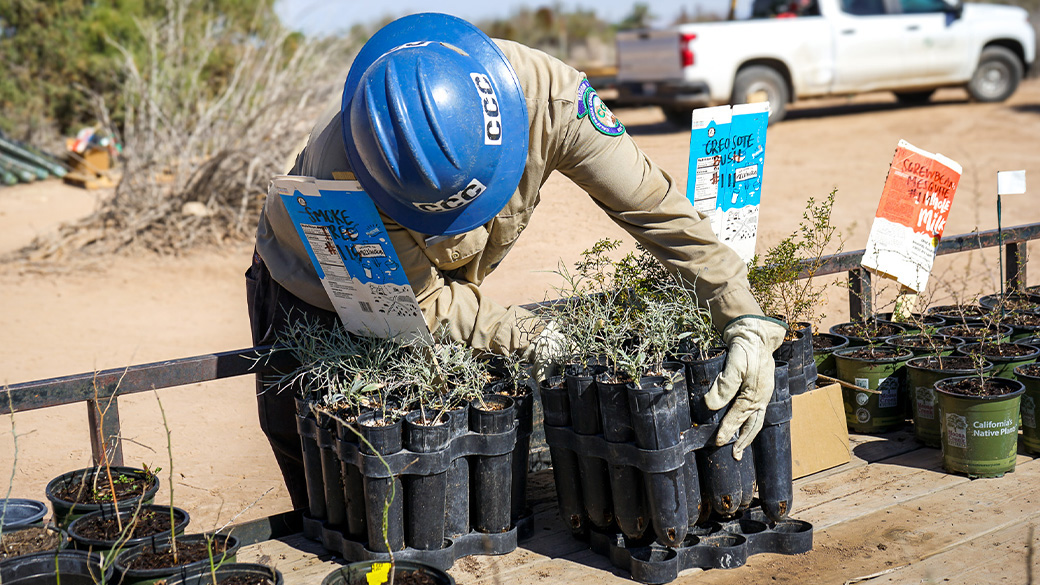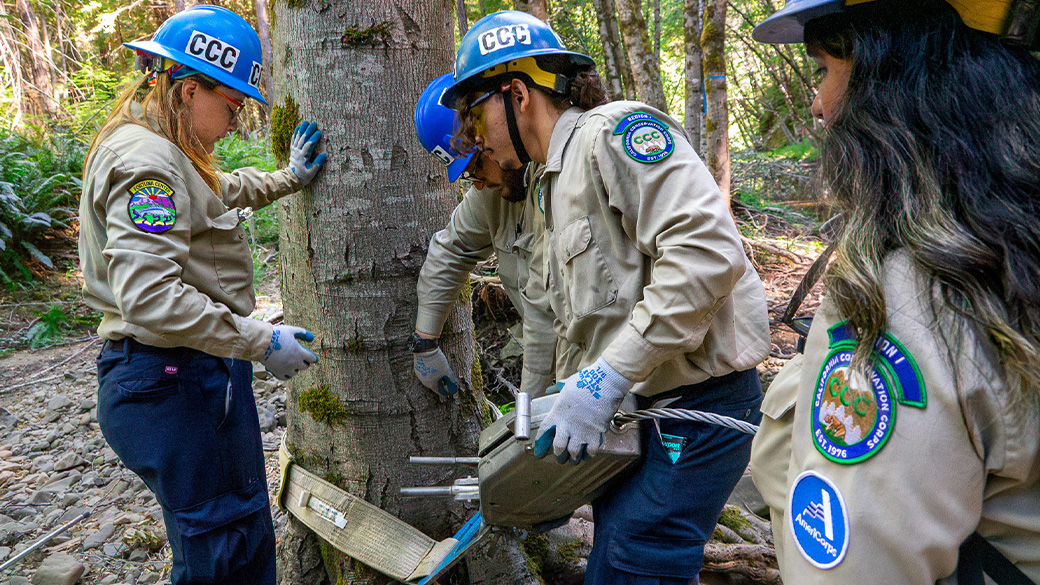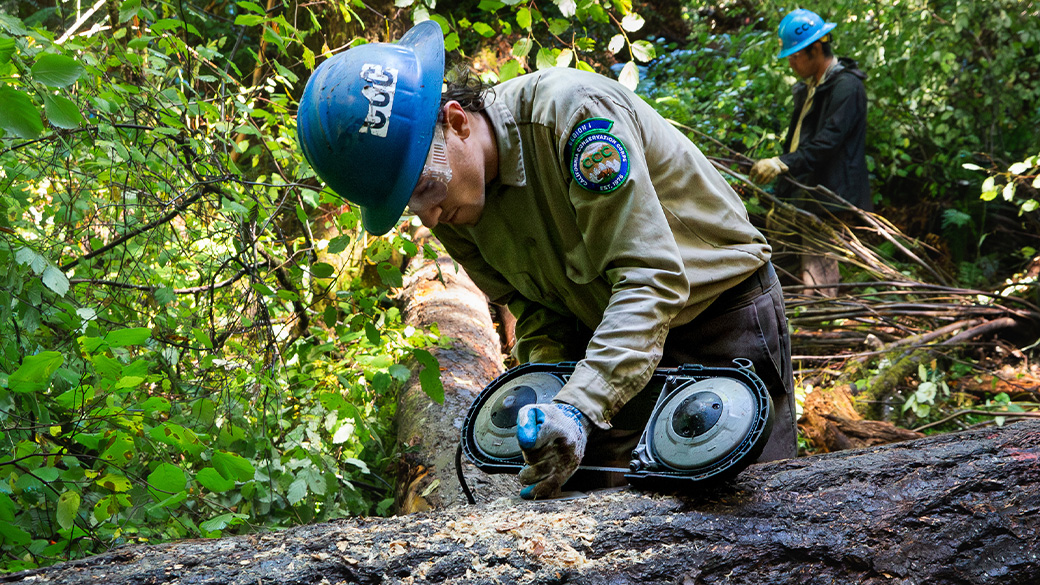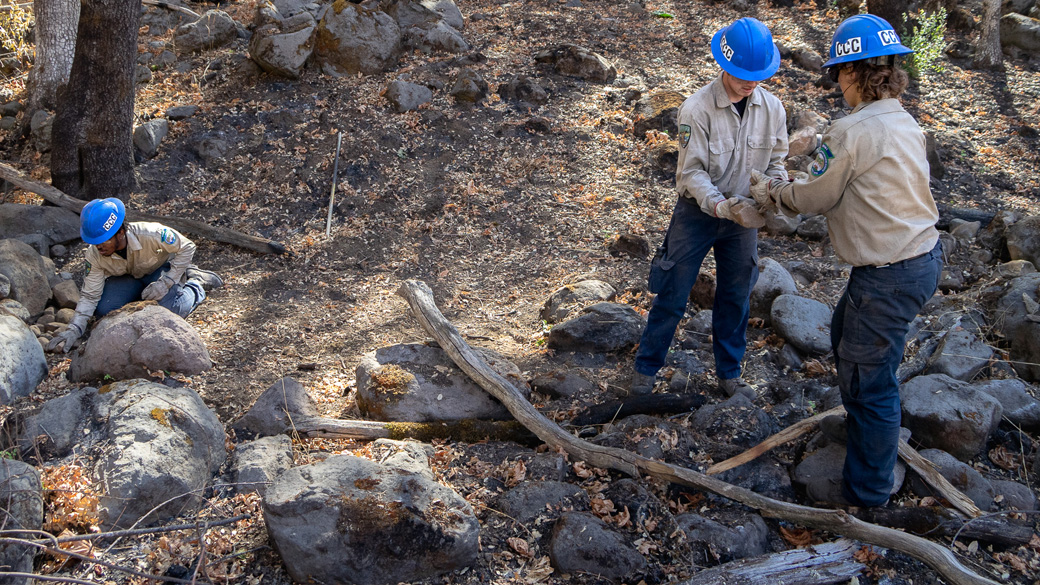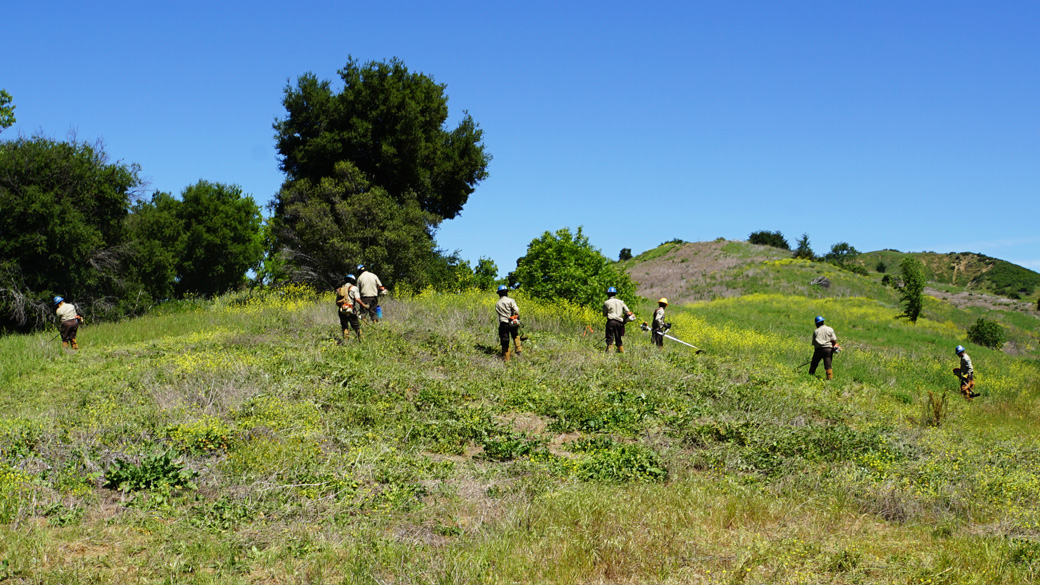Habitat Restoration
Time for transformation!
Watch CCC’s Habitat Restoration Playlist and get inspired!
Gear UP
Know Before You Go
Schedule
Corpsmembers may work variable schedules depending on projects, typically working four 10-hour days Monday to Thursday.
Emergencies
Corpsmembers must be willing to respond to emergencies and be dispatched for lengthy periods of time with little or no notice.
Eligibility
There is no prior experience required or additional eligibility requirements, aside from our standard program eligibility, to serve on these crews.
Find Your Path

MK Woodie
Water Analyst
Quartz Valley Indian Reservation
Like a fish in water, MK Woodie’s time in the CCC went swimmingly! From building bridges with the CCC Santa Maria Center to fighting floods with the CCC Tahoe center, she jumped from place-to-place learning valuable skills along the way.
“My favorite experience hands-down was participating in the Mattole dives with the Watershed Stewards Program,” said MK. “There I saw 20-foot pools filled with fish water snakes, turtles, just anything. It was amazing, it’s what I love to do. My happy place.”
With a long-term goal of becoming a marine biologist, MK was able to leverage her scholarships and packed resume to land a job as a water analyst with the Quartz Valley Indian Reservation and enroll in school to obtain her associate degree in environmental science.
MK Woodie
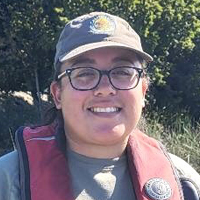
Chynna Silva
Aquatic Pest Control Technician
California State Parks – Division of Boating and Waterways
After 20 months in the CCC, Chynna Silva made a splash with California State Parks – Division of Boating and Waterways. That’s right, she’s landed a position as an aquatic pest control technician.
“The CCC prepared me for this job by preparing me for working outdoors,” Chynna said. “It built my foundation for working in State Parks and gave me knowledge, working with certain tools that I had never used before.”
For folks interested in the CCC, she says “it’s a job training program so make sure you use it that way to prepare for future employment.” By leveraging her experiences in the program, Chynna is floating along on her Path to Success!
Chynna Silva

Marina Chow
Invasive Plant Management Technician
Great Bain Institute
Marina Chow never saw herself in a leadership role before joining the CCC. “I didn’t know how to be a leader,” she said. “But, I wanted to push myself, so I chose to be a crew leader.”
Marina’s experience and dedication earned her the respect of her crew, increasing her confidence and developing her leadership abilities. While at CCC Pomona, Marina also honed her plant identification and hiking skills.
After more than two years in the program, Marina is now applying everything she learned at her new job with the Great Basin Institute in Yosemite National Park. In this role, she’s surveying public lands to identify rare and invasive species and help determine if past treatments have been effective.
Marina Chow
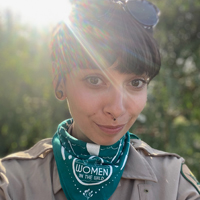
Jiji Plum
Park Attendant
Otay Lakes County Park (San Diego)
Julianna (Jiji) Plum transformed their life with the CCC, overcoming their past cycles of homelessness and abuse. Despite initial doubts, they persevered at the CCC San Diego Center, supported by their crew and supervisors.
“I was scared I wasn’t capable,” Jiji said, “but I concluded that if I run away cause it’s hard, I’m giving up on life.” Now holding two jobs with Otay Lakes County Park and Old Town Historic State Park, Jiji encourages others to join the CCC and move forward on their #PathToSuccess. \
“Just do it. For one year, choose yourself and take every opportunity there is,” they said. “Do your best every day. You’re going to grow and learn so much. It’s life changing.”
Jiji Plum
Explore our locations
At as many as 19 locations across California, CCC Corpsmembers work on habitat restoration projects. Specific projects and trainings vary across centers.
These kinds of projects take place at all CCC centers, except for the Camarillo, Los Piños, Magalia, Norwalk, and Vista centers.
Chico Center
As many as three Chico Center crews may complete Habitat Restoration related projects. As many as 45 Corpsmembers serve on these crews.
Delta Center
As many as three Delta Center crews may complete Habitat Restoration related projects. As many as 45 Corpsmembers serve on these crews.
Fortuna Center
As many as three Fortuna Center crews may complete Habitat Restoration related projects. As many as 45 Corpsmembers serve on these crews.
Fresno Center
As many as three Fresno Center crews may complete Habitat Restoration related projects. As many as 35 Corpsmembers serve on these crews.
Inland Empire Center
As many as four Inland Empire Center crews may complete Habitat Restoration related projects. As many as 60 Corpsmembers serve on these crews.
Los Angeles Center
As many as three Los Angeles Center crews may complete Habitat Restoration related projects. As many as 45 Corpsmembers serve on these crews.
Los Padres Center
As many as three Los Padres Center crews may complete Habitat Restoration related projects. As many as 45 Corpsmembers serve on these crews.
Mendocino Center
As many as three Mendocino Center crews may complete Habitat Restoration related projects. As many as 45 Corpsmembers serve on these crews.
Monterey Bay Center
As many as two Monterey Bay Center crews may complete Habitat Restoration related projects. As many as 30 Corpsmembers serve on these crews.
Pomona Center
As many as four Pomona Center crews may complete Habitat Restoration related projects. As many as 60 Corpsmembers serve on these crews.
Placer Center
As many as four Placer Center crews may complete Habitat Restoration related projects. As many as 60 Corpsmembers serve on these crews.
Redding Center
As many as three Redding Center crews may complete Habitat Restoration related projects. As many as 45 Corpsmembers serve on these crews.
Sacramento Center
As many as four Sacramento Center crews may complete Habitat Restoration related projects. As many as 45 Corpsmembers serve on these crews.
Santa Maria Center
The Santa Maria crew may complete Habitat Restoration related projects. A maximum of 15 Corpsmembers serve on this crew.
San Diego Center
As many as four San Diego Center crews may complete Habitat Restoration related projects. As many as 60 Corpsmembers serve on these crews.
Salinas Center
One Salinas Center crew may complete Habitat Restoration related projects. A maximum of 15 Corpsmembers serve on this crew.
Siskiyou Center
The Siskiyou Center crew may complete Habitat Restoration related projects. A maximum of 15 Corpsmembers serve on the crew.
Tahoe Center
As many as three Tahoe Center crews may complete Habitat Restoration related projects. As many as 45 Corpsmembers serve on these crews.
Solano Center
As many as two Solano Center crews may complete Habitat Restoration related projects. As many as 30 Corpsmembers serve on these crews.
Ask Us Anything
Talk to A Recruiter
How do I join a habitat restoration crew?
Corpsmembers intersted in doing habitat restoration work will be assigned to a resource, or grade, crew at their CCC center. Project work varies at centers, so habitat restoration projects and trainings are not always guaranteed.
Where can I work on salmon restoration projects?
When do salmon restoration projects take place?
Salmon Restoration Projects, or known in the CCC simply as SRP, typically take place from July to October each year.
While SRP training takes place at the start of the season, Corpsmembers joining a center after July may be able to join a resource crew committed to SRP work.
How do you determine when to remove invasive species?
The CCC itself does not make these kinds of decisions, rather our project sponsors provide us with the tasks of removing invasive species when they contract, or establish a memorandum of understanding, with a CCC center.
REad Our NEws
Chico Corpsmembers worked quickly before winter rains arrived to create natural barriers and filtration systems to protect Big Chico Creek and its native wildlife.
Los Angeles Center Corpsmembers spent time spiking at Malibu Creek State Park to help protect the area from wildfire by reducing invasive plant species.
The start of the Salmon Restoration Project season—we just call it SRP—is one full of firsts for our CCC Fortuna Corpsmembers.
CCC Fortuna Corpsmembers gave a coastal forest a major boost by removing invasive English ivy.

